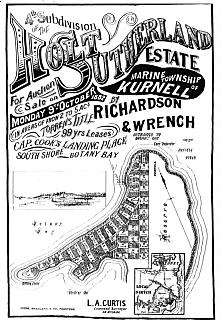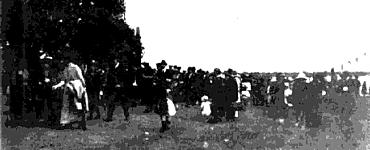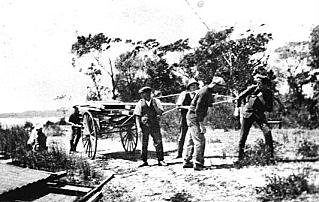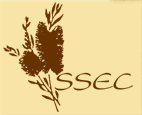The Village Grows Up |
Early Years
From the earliest days of Sydney's growth, its need of building materials impacted on Kurnell Peninsula. Trees from the peninsula went into housing and bridges. The shell of the large mud oysters in Botany Bay provided lime for mortar, so shellgetters put up shacks around Weeney, Quibray and Woolooware Bays. The impressive number of fish in the bays also attracted fishermen to set up semi-permanent camps. Yet because of the lack of road access, permanent settlers were few in the early years. In 1850 it was reported in the St George Call that blacks were more numerous than whites. A village of Kurnell emerged slowly, almost exclusively as a fishing village, and some of its inhabitants were reputed to be refugees from the law. Botany Bay was the highway to the villagers. |
 |
On Monday 9 th October 1882 Richardson and Wrench auctioned a subdivision of the Holt Sutherland Estate, termed pretentiously "The Marine Township of Kurnell". Many of the blocks were absurdly narrow with 21-foot and 22-foot frontages, justified on the grounds that Kurnell Village was projected as a Fishing and Holiday Resort. The blocks were considered to be adequate for weekenders. But the frontages were soon found to be too narrow for permanent residents; so blocks were coupled to make 42-foot and 44-foot frontages.
Kurnell had been a tourist and holiday destination for many years. Sir Joseph Carruthers in the 1880s and 1890s frequented the region for its fishing and shooting. The historic significance of Captain Cook's Landing Place was recognised and the annual landing celebrations persisted. |

 |
But until Council and Caltex built the road, the isolated village of Kurnell had a closer relationship with La Perouse and Botany than with Sutherland Shire.
In 1925 Kurnell's isolation prompted the residents to attempt to form their own municipality; but the Minister for Local Government refused to accede to their entreaty and the residents were left pretty much to their own devices. Kurnell "just growed up". During the 1930s Depression a 'Happy Valley' of fishing and holiday camps sprang up around the peninsula with settlers paying the landowners a fee for permissive occupancy. Building components for the homes were gleaned from the bushland or improvised from scrap, empty containers, abandoned items, and materials brought over by boat from La Perouse, Botany or Sans Souci. The ferrymen also carried foodstuffs, newspapers and household goods for the settlers. |
 |
| top of page |



